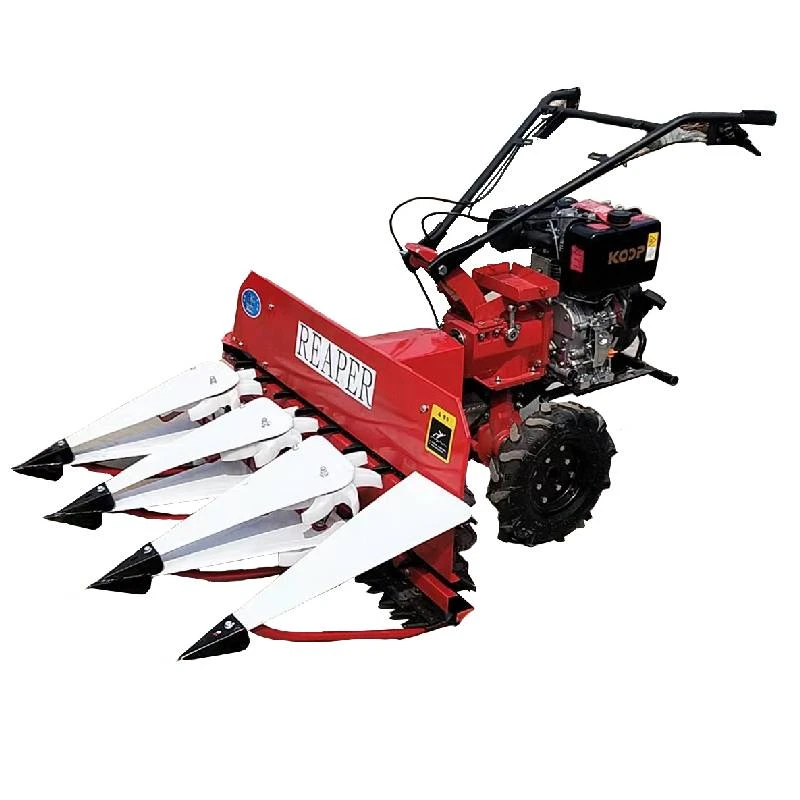Efficient Harvesting Solutions with Advanced Reaper Cutter Machines for Modern Agriculture
The Reaper Cutter Machine Revolutionizing Agricultural Efficiency
In the realm of modern agriculture, the advent of advanced machinery has drastically transformed farming practices, making them more efficient and less labor-intensive. Among these innovations, the reaper cutter machine stands out as a pivotal invention that has significantly influenced harvesting techniques. This piece of equipment not only enhances productivity but also plays a crucial role in the overall agricultural economy.
The reaper cutter machine, often referred to simply as a reaper, is designed to efficiently harvest crops, particularly cereal grains such as wheat, barley, and oats. Its development dates back to the early 19th century, with inventions by agricultural pioneers like Cyrus McCormick, who is credited with creating the first commercially successful mechanical reaper in 1831. This invention laid the foundation for modern agricultural machinery and revolutionized the way crops are harvested.
Mechanism and Functionality
The core functionality of the reaper cutter machine lies in its ability to cut down crops swiftly and effectively. Typically, these machines are equipped with a series of sharp blades that operate in a scissor-like fashion. As the machine moves through the fields, these blades slice through the stalks of plants, ensuring a clean cut. The harvested crop is then gathered and either placed onto the ground for further processing or loaded onto a trailer for transportation.
Modern reaper cutter machines come in various sizes and configurations, tailored to meet different farming needs. Some are designed for small-scale operations, while others cater to large agricultural enterprises. Many contemporary models also feature advanced technology, such as GPS for precise navigation and optimized cutting paths, ensuring minimal loss of crop during harvesting.
Benefits of the Reaper Cutter Machine
The introduction of reaper cutter machines has brought about numerous benefits to the agricultural sector
1. Increased Efficiency One of the most significant advantages of using a reaper is the dramatic increase in harvesting speed. A skilled farmer with a sickle could spend days or even weeks harvesting a field, while a reaper can complete the same task in a matter of hours. This efficiency not only saves time but also reduces labor costs.
reaper cutter machine

2. Reduced Labor Intensity With fewer workers needed for harvesting, farmers can reallocate human resources to other essential tasks, improving overall productivity. This reduction in labor demand is particularly advantageous in regions where labor shortages are common.
3. Higher Crop Yields By enabling faster harvesting, reaper cutter machines help prevent crop losses due to factors such as weather conditions or pest infestations. Timely harvesting can significantly enhance the quality and quantity of yields.
4. Improved Quality of Harvest The precision cutting capabilities of reaper machines ensure a cleaner cut, which can help in maintaining the quality of the harvested grain. This is particularly important in agricultural markets where premium pricing is tied to the condition of the crop.
Challenges and Considerations
Despite its many advantages, the deployment of reaper cutter machines is not without challenges. Farmers must consider the initial investment costs associated with purchasing and maintaining such equipment. Additionally, the training required to operate these machines efficiently can pose a barrier, particularly for older generations accustomed to traditional harvesting methods.
Moreover, there's a growing concern regarding the environmental impact of mechanized farming. The heavy machinery can lead to soil compaction, which affects soil health and crop yields in the long run. As such, farmers must balance the benefits of mechanization with sustainable practices that protect their land for future generations.
Conclusion
The reaper cutter machine has undoubtedly revolutionized the agricultural landscape, providing farmers with the tools necessary to increase efficiency and productivity. As technology continues to evolve, so too will the capabilities of these machines, potentially incorporating features such as autonomous operation and enhanced data analytics. The future of farming will likely see an even greater reliance on such innovations, highlighting the importance of the reaper cutter machine in the ongoing quest for sustainable and efficient agricultural practices. Embracing these advancements will be crucial for farmers aiming to thrive in an increasingly competitive global market.
Latest news
-
When to Upgrade Your Old Forage HarvesterNewsJun.05,2025
-
One Forage Harvester for All Your NeedsNewsJun.05,2025
-
Mastering the Grass Reaper MachineNewsJun.05,2025
-
How Small Farms Make Full Use of Wheat ReaperNewsJun.05,2025
-
Harvesting Wheat the Easy Way: Use a Mini Tractor ReaperNewsJun.05,2025
-
Growing Demand for the Mini Tractor Reaper in AsiaNewsJun.05,2025
